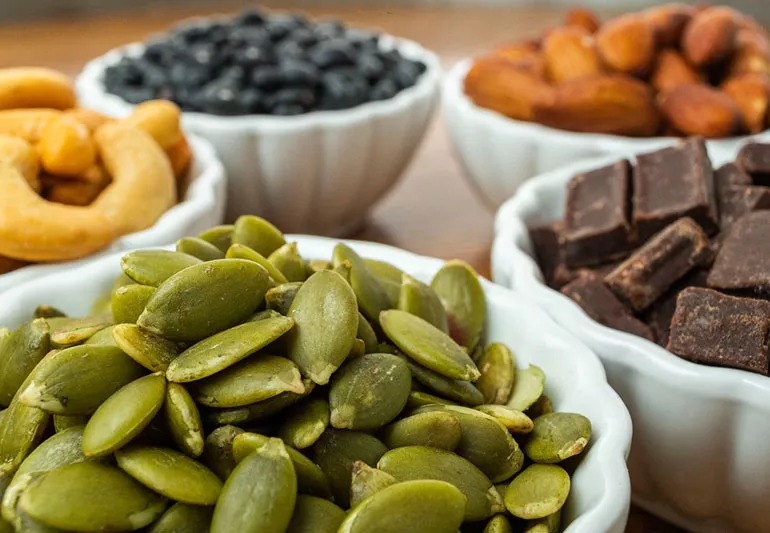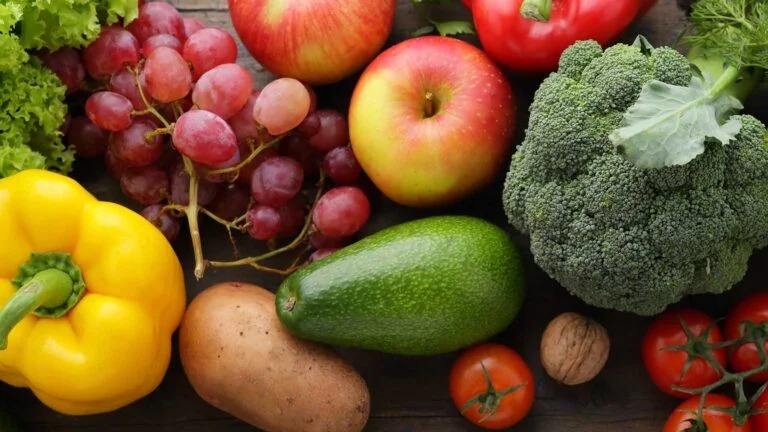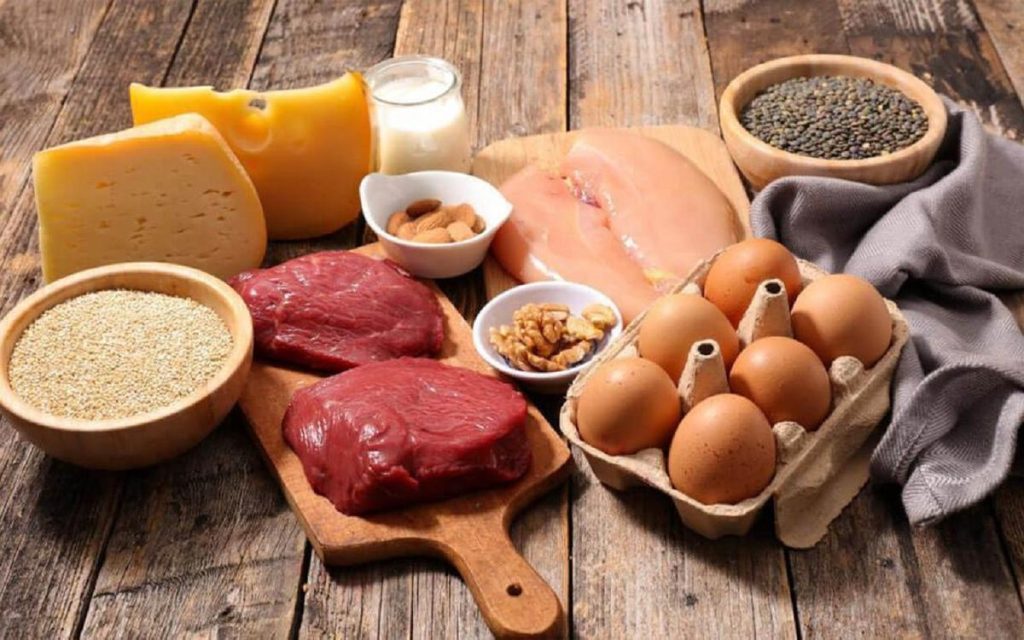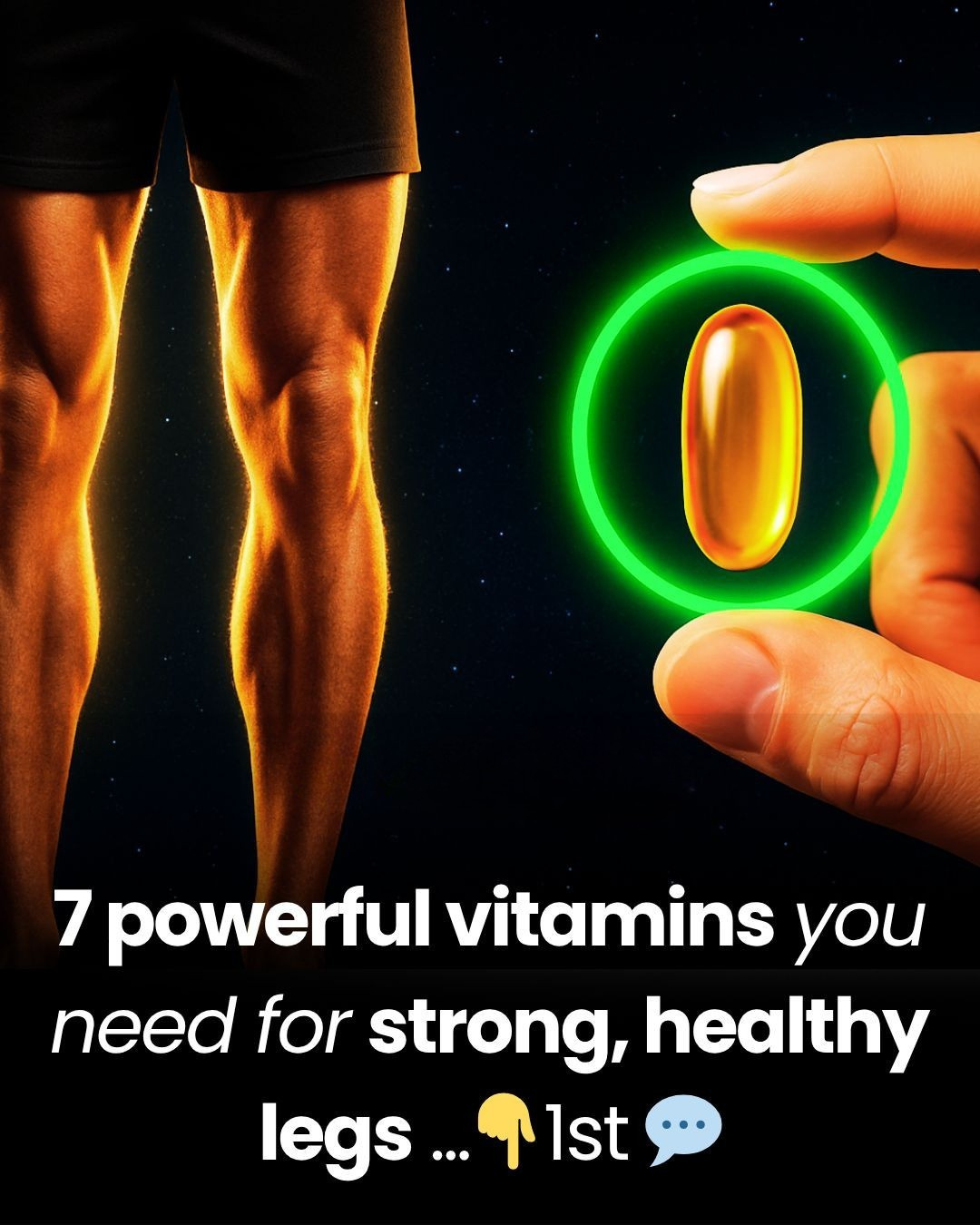4. Magnesium: Your Leg’s Natural Relaxant

Magnesium helps muscles relax after they contract — without it, you may feel tight, crampy, or restless, especially at night.
What It Does:
- Helps muscles “let go” properly after movement.
- Regulates nerve impulses so your legs don’t spasm randomly.
- Works in balance with calcium — one tenses, the other relaxes.
Magnesium-Rich Foods:
- Pumpkin seeds and sunflower seeds.
- Almonds, cashews, and peanuts.
- Avocados and steamed greens (like chard or spinach).
Supplement Tip:
Forms like magnesium citrate or glycinate are often better tolerated and absorbed than cheaper forms like magnesium oxide.
5. Potassium: For Smooth Muscle Function

Low potassium can lead to leg cramps, fatigue, and muscle twitches — especially after sweating, illness, or diuretic use.
Signs You Might Need More:
- Cramping at night or after exercise.
- Feeling sluggish or slow to recover after walking.
- Irregular heartbeat in extreme cases.
Natural Sources:
- Bananas, sweet potatoes, white beans.
- Coconut water (great for hydration).
- Spinach and cooked beet greens.
Note: Too much potassium can be dangerous for people with kidney disease, so check with your doctor before supplementing.
6. Vitamin K2: The Calcium Traffic Cop

Vitamin K2 helps ensure calcium goes to your bones — not your arteries, muscles, or joints. It’s a lesser-known nutrient, but vital if you’re taking calcium or vitamin D.
Why It Matters:
- Directs calcium to bones and prevents arterial calcification.
- May reduce risk of joint stiffness and leg artery narrowing.
Where to Get It:
- Natto (fermented soybeans) is the top source.
- Fermented cheeses (like gouda, brie).
- Supplement tip: Look for K2 as “MK-7” — it lasts longer in the body than MK-4.
7. Omega-3s: To Fight Inflammation and Pain

If your legs ache, swell, or feel stiff, inflammation could be involved — and omega-3 fatty acids help calm it down.
Benefits for Your Legs:
- May reduce joint inflammation and leg discomfort.
- Improve blood flow to leg muscles.
- Support nerve health and may ease neuropathy symptoms.
Top Sources:
- Fatty fish (sardines, mackerel, salmon).
- Flaxseeds and chia seeds (plant-based ALA).
- Fish oil or algae-based omega-3 supplements.
Bonus Tip: Movement Multiplies the Benefits
Nutrients are essential — but they work even better when paired with movement. Weight-bearing exercises like walking, bodyweight squats, or simply standing up from a chair multiple times a day help your body actually use the nutrients you give it.
- Take a short walk after meals (boosts both blood sugar control and circulation).
- Do gentle calf raises while brushing your teeth.
- Stretch your hamstrings and hip flexors daily.
4. Magnesium: Your Leg’s Natural Relaxant

Magnesium helps muscles relax after they contract — without it, you may feel tight, crampy, or restless, especially at night.
What It Does:
- Helps muscles “let go” properly after movement.
- Regulates nerve impulses so your legs don’t spasm randomly.
- Works in balance with calcium — one tenses, the other relaxes.
Magnesium-Rich Foods:
- Pumpkin seeds and sunflower seeds.
- Almonds, cashews, and peanuts.
- Avocados and steamed greens (like chard or spinach).
Supplement Tip:
Forms like magnesium citrate or glycinate are often better tolerated and absorbed than cheaper forms like magnesium oxide.
5. Potassium: For Smooth Muscle Function

Low potassium can lead to leg cramps, fatigue, and muscle twitches — especially after sweating, illness, or diuretic use.
Signs You Might Need More:
- Cramping at night or after exercise.
- Feeling sluggish or slow to recover after walking.
- Irregular heartbeat in extreme cases.
Natural Sources:
- Bananas, sweet potatoes, white beans.
- Coconut water (great for hydration).
- Spinach and cooked beet greens.
Note: Too much potassium can be dangerous for people with kidney disease, so check with your doctor before supplementing.
6. Vitamin K2: The Calcium Traffic Cop

Vitamin K2 helps ensure calcium goes to your bones — not your arteries, muscles, or joints. It’s a lesser-known nutrient, but vital if you’re taking calcium or vitamin D.
Why It Matters:
- Directs calcium to bones and prevents arterial calcification.
- May reduce risk of joint stiffness and leg artery narrowing.
Where to Get It:
- Natto (fermented soybeans) is the top source.
- Fermented cheeses (like gouda, brie).
- Supplement tip: Look for K2 as “MK-7” — it lasts longer in the body than MK-4.
7. Omega-3s: To Fight Inflammation and Pain

If your legs ache, swell, or feel stiff, inflammation could be involved — and omega-3 fatty acids help calm it down.
Benefits for Your Legs:
- May reduce joint inflammation and leg discomfort.
- Improve blood flow to leg muscles.
- Support nerve health and may ease neuropathy symptoms.
Top Sources:
- Fatty fish (sardines, mackerel, salmon).
- Flaxseeds and chia seeds (plant-based ALA).
- Fish oil or algae-based omega-3 supplements.
Bonus Tip: Movement Multiplies the Benefits
Nutrients are essential — but they work even better when paired with movement. Weight-bearing exercises like walking, bodyweight squats, or simply standing up from a chair multiple times a day help your body actually use the nutrients you give it.
- Take a short walk after meals (boosts both blood sugar control and circulation).
- Do gentle calf raises while brushing your teeth.
- Stretch your hamstrings and hip flexors daily.

